Atmospheres: Earth, Air & Water Blu-ray Movie
HomeAtmospheres: Earth, Air & Water Blu-ray Movie 
National Geographic | 2008 | 102 min | Not rated | Jan 06, 2009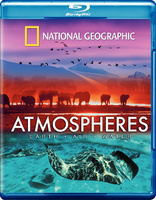
Movie rating
6.6 | / 10 |
Blu-ray rating
| Users | 4.0 | |
| Reviewer | 4.0 | |
| Overall | 4.0 |
Overview
Atmospheres: Earth, Air & Water (2008)
Sample the sights and sounds of three distinct environments with this exotic National Geographic program that takes you to the vast grasslands of the African savannah, the dense rainforests of the Amazon and the icy plains of the Arctic. Users can also choose from two different audio tracks to accompany the slate of ever-changing imagery -- a selection of world music or an assortment of natural sounds.
| Documentary | Uncertain |
| Nature | Uncertain |
Specifications
Video
Video codec: MPEG-4 AVC
Video resolution: 1080p
Aspect ratio: 1.78:1
Audio
Music: Dolby Digital 5.1
Music: Dolby Digital 5.1
Music: Dolby Digital 2.0
Music: Dolby Digital 2.0
Music and Natural sounds.
Subtitles
None
Discs
25GB Blu-ray Disc
Single disc (1 BD)
Playback
Region A (B, C untested)
Review
Rating summary
| Movie | 4.0 | |
| Video | 4.5 | |
| Audio | 3.5 | |
| Extras | 2.0 | |
| Overall | 4.0 |
Atmospheres: Earth, Air & Water Blu-ray Movie Review
This "Planet Earth light" traverses the globe in 90 minutes, providing some spectacular imagery along the way.
Reviewed by Jeffrey Kauffman September 7, 2009Not to dredge up ancient history, but remember when high definition was still fairly new, a certain format war was taking place, and various people were experiencing their eyes bugging out with Planet Earth? High def may be almost passé to some by this time, and we don’t have a format war to argue over anymore, but the mad acclaim for Planet Earth does seem to have died down a bit in the intervening years. If you’ve wondered what all the fuss was about, but haven’t wanted to invest in either the time or money it takes to experience all of that magnificent Discovery Channel series, you have a Clif’s Notes version of sorts here in this quite wonderful National Geographic documentary, Atmospheres: Earth, Air and Water. And even better yet (at least to this reviewer, who sometimes can do without portentous voice overs spoiling the lovely scenery), there’s not one word of narration, just your choice of either the natural sound environments or a soothing music soundtrack mixed with those natural sounds.
As the subtitle to this documentary might suggest, Atmospheres: Earth, Air and Water is a trifold look at various wonders which surround us on this amazing planet, split into three fairly discrete segments focusing on one element. Atmospheres may have, in its title at least, seem to have forgotten the fourth element, fire, but as this piece starts with volcanic activity, you can see that, as the alchemists used to claim, each of the elements blends with the others, and so earth is wed to fire in this opening segment. In fact, in what is either a nice piece of serendipity or some very smart thinking, the first scenes actually combine all three elements named in the title, plus fire, as we get a great aerial tracking shot of lava spilling into the ocean creating huge plumes of steam. Swirling panoramas of lava look almost like close-ups of a Van Gogh sun at times, with furious oranges and reds dissolving everything around them.
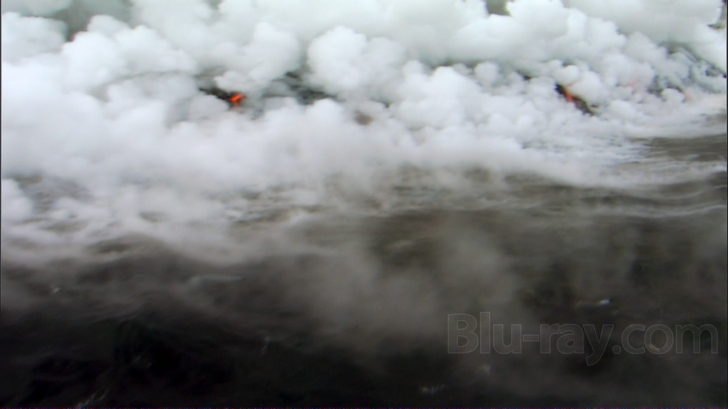
All four elements combine as lava (fire and earth) pours into the ocean, creating huge steam plumes.
You may remember that Louisiana Governor Bobby Jindal came in for a little criticism when he took a federal “volcano watch” program to task in a nationally televised speech he gave. As someone who lives in the Pacific Northwest, and who in fact was here when Mt. St. Helens erupted, I personally can tell you volcano watches are necessary for this part of the world, and Atmospheres makes that abundantly clear as it provides up close and personal views of the at times weirdly calm destructive capability of flowing lava. The savage fury of volcanoes is truly unbelievable if you haven’t experienced it personally; I still remember how amazed I was a good ten years after St. Helens had blown its top, and I had purchased my first house. I got up on a ladder to do some gutter repair and was shocked to see inches of hard-crusted ash still almost welded to the interior of the gutters. And Mt. St. Helens is over 100 miles (by road) from Portland! Atmospheres may take a somewhat more languid approach to the subject, but the slow, Shiva-like dance of lava footage is both beautiful and slightly alarming.
The swirling oranges of lava make a neat transition to the similarly burnt rust look of the strange and beautiful rock formations of the American southwest, strangely enough another area I’ve spent a great deal of my life, having been born and raised in Utah. This region, made famous in many westerns directed by John Ford, is a barren yet compelling landscape, full of patently weird rock outcroppings which jut at odd angles against a stunningly blue sky. We then get an amusing little “cameo” of a couple of beetles trying to make their way through a desert sand hill, which leads to an almost balletic sequence featuring ants, including one brave soul that mounts and repeatedly traverses the head of a napping Gila monster.
A lovely sequence featuring Africa follows, with some frolicking lions, including some adorable cubs, as well as some of the most patently weird looking birds you’ve ever seen (in fact, I wish there had been some sort of identification offered in the extras for some of these more exotic species). Monkeys and elephants complete our tour of wildlife before Atmospheres moves on to some stunning images of mist enveloped hills and some equally neat time lapse photography of various flowers coming into bloom. “Earth” closes its roughly 30 minute segment with a cute sort of mini March of the Penguins segment, featuring our favorite tuxedo clad creatures waddling and flapping about in all their glory.
The “Air” segment opens with several impressive vistas of various cloud formations, and then moves on to some visceral storm footage that looks like it was shot in America’s heartland. Even more cloud footage follows, but this time it’s some very cool time lapse photography that shows a huge cloudbank “growing” over time, almost in fact like a volcanic eruption. After a brief sequence of slow motion birds in flight, one of the highlights (no pun intended) of this Blu-ray is offered in a truly stupendous longer segment featuring the Aurora Borealis. This cosmic lightshow is a wonder of blues and greens, with tons of shooting stars, and the shots here are simply magical.
As any fan of Planet Earth will attest, some of that series’ strongest sequences were the underwater ones, and Atmospheres matches the longer form series in that regard. The final third or so of this documentary is filled with beautiful (and wonderfully clear) underwater shots of strange flora and various sea life. It’s really amazing to see the unbelievably bright colors that exist beyond our everyday reality, hidden beneath the veil of the oceans. The final moments of this piece move above the water for some lovely shots of island landscapes, with sea lions and other creatures, before finishing off with Niagara Falls.
This 90 minute documentary obviously doesn’t have the depth or scientific inquiry attitude of Planet Earth and its Discovery Channel siblings, but over the course of its hour and a half, the viewer is treated to some spectacular imagery. This may be “ambient television” (an emerging genre I’ll be dealing with in several upcoming reviews of other similar product), but it’s gorgeously shot and surprisingly involving.
Atmospheres: Earth, Air & Water Blu-ray Movie, Video Quality 
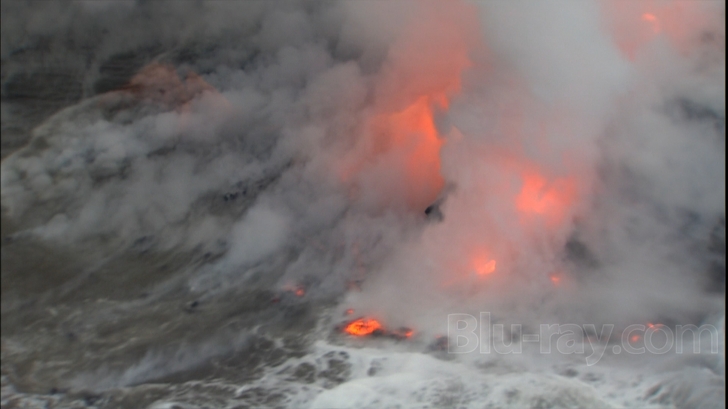
Atmospheres looks spectacular in its 1080p/AVC encode, with the same sharpness and astoundingly popping color palette that made Planet Earth such a sensation a few years ago. Everything from the rust oranges of lava to the startling blues and greens of the Aurora Borealis are reproduced with absolutely accuracy and amazing saturation. This documentary is filled to the brim with swirling images, including lots of mist and clouds, and there is not a moment of macroblocking that I noticed throughout the 90 minutes. Fine line detail is superb and depth of field is simply top notch. Some of the close ups are actually alarming, they're so clear. I don't believe I've ever seen a beetle's "texture" so clearly before.
Atmospheres: Earth, Air & Water Blu-ray Movie, Audio Quality 
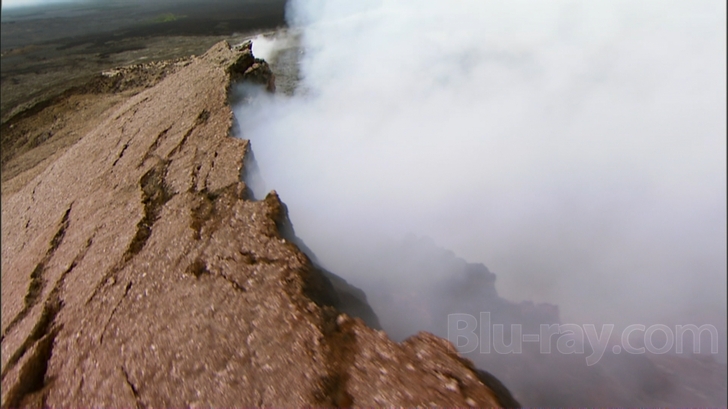
The good news is, National Geographic has provided the viewer with four options in terms of soundtracks on this release: two DD 5.1 mixes, one with music combined with (faint) nature sounds, and one with just the nature sounds, and two similar ones folded down to DD 2.0. (As noted in the review, there's no narration in this piece, which I personally loved). High def enthusiasts are probably not going to be very wowed by any of these choices, but there's nothing to complain about per se with what's here. While the natural sounds are at least semi-immersive, they're awfully quiet at times. That said, it's fun to hear the scamper of two beetles across sand make its way from channel to channel as the poor little bugs attempt to mount a huge dune. Water sounds are clear and (no pun intended) liquid, with some impressive LFE in the Niagara Falls sequence. While the original music by Mark Edmondson, Richard Morel and Jon Wolfson is enjoyable, it has a prevalence of low end, which tends to drown out all but the most intrusive ambient sounds combined in that mix. It's actually kind of fun to switch between the tracks as you watch this piece, to get little snippets of what they all have to offer. This is in no way a reference quality soundtrack (in any of its mixes), but it's clear, with excellent fidelity and range (if tilted toward the lower frequencies in the music tracks), and for those non-audiophiles in the audience, should suffice just fine.
Atmospheres: Earth, Air & Water Blu-ray Movie, Special Features and Extras 
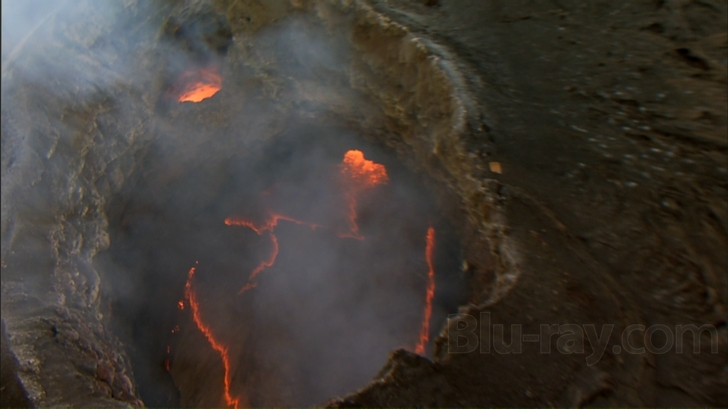
The only real supplement is a text extra detailing some of the more unusual water creatures seen in that segment (as well as some not seen). That's all perfectly fine and well, but as I noted above, I would have loved some background information on some of the other strange species detailed in the documentary.
Atmospheres: Earth, Air & Water Blu-ray Movie, Overall Score and Recommendation 
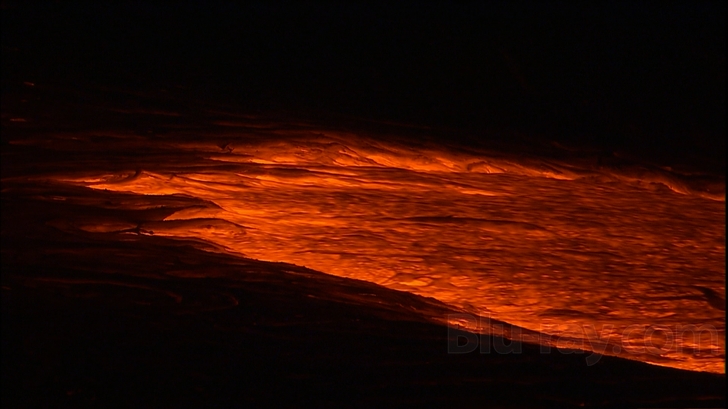
"Ambient television" is going to be a growing concern, let me be one of the first to tell you. This National Geographic documentary does this burgeoning idiom in style, with lovely imagery and an appealing, if somewhat lackluster, choice of soundtracks to augment the scenery. It may indeed be Planet Earth light, but it's extremely enjoyable, nonetheless.
Similar titles
Similar titles you might also like
(Still not reliable for this title)

Rhino Rescue
2009

Kingdom of the Blue Whale
2009

Extreme
IMAX
1999

Relentless Enemies
2006

Journey to the Edge of the Universe
2009

Coral Reef Adventure
IMAX
2003

Africa: The Serengeti
IMAX
1994

Galápagos
2006

Planet Earth
The Complete Series
2006

Serengeti
2019

One Life
2011

Planet Ocean
2012

National Parks Exploration Series: Yosemite - The High Sierras
2012

Wonders of the Solar System
2010

Discovery Atlas: Complete Collection

Wonders of the Universe
BBC
2011

Over Ireland
1998

North America
2013

Secret Life of Birds
2011

Over California
1994